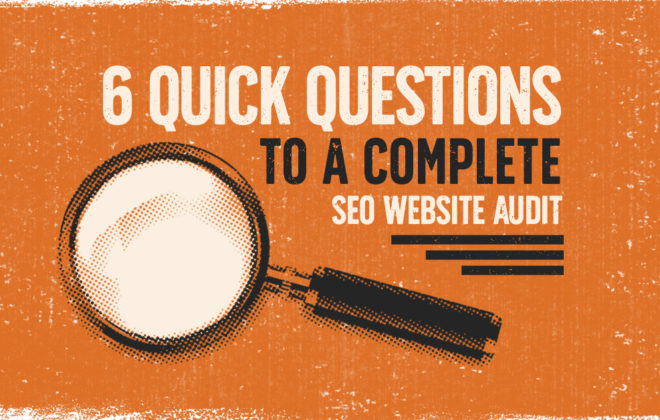
What SEO Metrics Should I Track to Measure Success?
One of the most advantageous aspects of online marketing is that there are a myriad of ways to track success. Examining your analytics reveals insights into how effective your marketing efforts are and where there is room for improvement. Knowing which SEO metrics to look for is essential to determining the performance of your campaigns.
Because there are so many metrics you can track with Google Analytics and other sources, it can lead to an overload of information. Collecting the data is just one step in understanding your SEO performance. You must also know how to interpret and evaluate the data to inform better business decisions.
The entire purpose of an SEO campaign is to drive traffic to your site organically, meaning you are using advertising strategies that are “free.” You may be paying a writer to create content or a marketing company to create SEO strategies, but you are not paying for the actual advertising content itself in the way you pay for PPC or sponsored ads. For this reason, analyzing your SEO metrics is even more important as it highlights areas where the strategy is working and where it is not.
To get a better understanding of your SEO performance, here are some of the most important metrics to focus your attention.
Conversion Rates
The term “conversion” is loosely applied in SEO marketing because a conversion can be defined as any desired action taken by the consumer. The person doing the “desiring” is, of course, the company and its marketing team. In order to track conversions, you need to establish clear goals. For example, common SEO goals include enticing people to sign up for email newsletters or completing a purchase from your site.
Conversions exist as both micro and macro conversions. Micro conversions are typically defined as smaller steps towards the overall goal (purchasing), which include actions such as joining the mailing list, following your social media account, and even merely browsing your site.
Macro conversions, on the other hand, refer to the main goal of your site, which, for virtually all businesses, is increased transactions. But actually tracking and increasing micro conversions and using the data to alter marketing strategies will, in turn, boost macro conversions as your SEO campaigns move consumers further along the path to purchase.
Organic Search Traffic
The end goal of a successful SEO campaign is to boost macro conversions and overall sales revenue, but the method by which this is accomplished is through increased organic search traffic. SEO differs from PPC (pay-per-click) marketing because you are not paying for ad placement. Instead, SEO campaigns use specific strategies such as targeting keywords and creating meaningful content to help a given search engine recognize the value of the information and organically bring it to the top of the results page.
This very act increases consumer awareness as most people do not click results past the first page of Google and other search engines. The more exposure you have to your market, the more likely you are to convert consumers. Tracking your organic search traffic will allow you to analyze how well your SEO campaigns are performing and provide insight into how to alter your approach for better results.
Examining your organic search traffic also reveals how your consumers are moving through the sales funnel. What pages do they visit on your site? Are they adding items to their cart but abandoning purchases? With this information, you can more successfully guide the customer journey towards conversion.
Keyword Rankings
Keyword rankings and organic search traffic go hand in hand. The higher your site ranks for its targeted keywords, the more organic traffic you’ll receive. This is a great method for comparing your success to your competition, but these rankings also change often, so it’s important not to get too hung up on your ranking for every single keyword. Search engine bots crawl every page of every site to determine its level of authority, page speed, content relevancy, and mobile optimization.
In recent years, mobile-ready websites have become even more important as Google announced a switch to mobile-first indexing in July 2019. This change means that Google’s crawlers use the mobile version of your site to determine its relevancy and ultimately its ranking, a move likely made because of the rising percentage of people searching, browsing, and shopping on mobile devices.
Though analytics tell us that most people still tend to make purchases on desktop or laptop devices, a significant number of shoppers are turning to mobile first as a way to research and discover products or services. BigCommerce reports that by 2021, mobile sales are expected to surpass desktop with 54 percent of people making mobile purchases. This is important information to keep in mind when building your SEO strategy and identifying keywords, and yet another good reason to track your metrics and re-evaluate based on market trends.
Understanding Your SEO Metrics
With an abundance of useful analytical data at your fingertips, it would be disadvantageous to ignore those metrics. SEO is a very successful long-term marketing solution to grow your business for years to come, which is why it’s so important to understand which metrics you should track and record. Based on key information like conversion rates, organic traffic, and keyword rankings, you can more accurately fine-tune your strategies to implement methods that entice consumers to buy.
Paul Rakovich
Browse All PostsTell Us Your Goals
Recent Posts
- Google PMax: Get the Most Out of Your Ad Campaigns While Combating Fraud
- Lead Ads Don’t Have to Suck: How to Leverage Them Correctly
- Why More Expensive PPC Ads are Almost Always Worth It
- Unlock the Secrets of Organic CPA: The Ultimate Guide to Cost Per Acquisition
- Secrets We’ve Learned from Years Working with Paid Account Reps at Meta, TikTok, LinkedIn and Google
